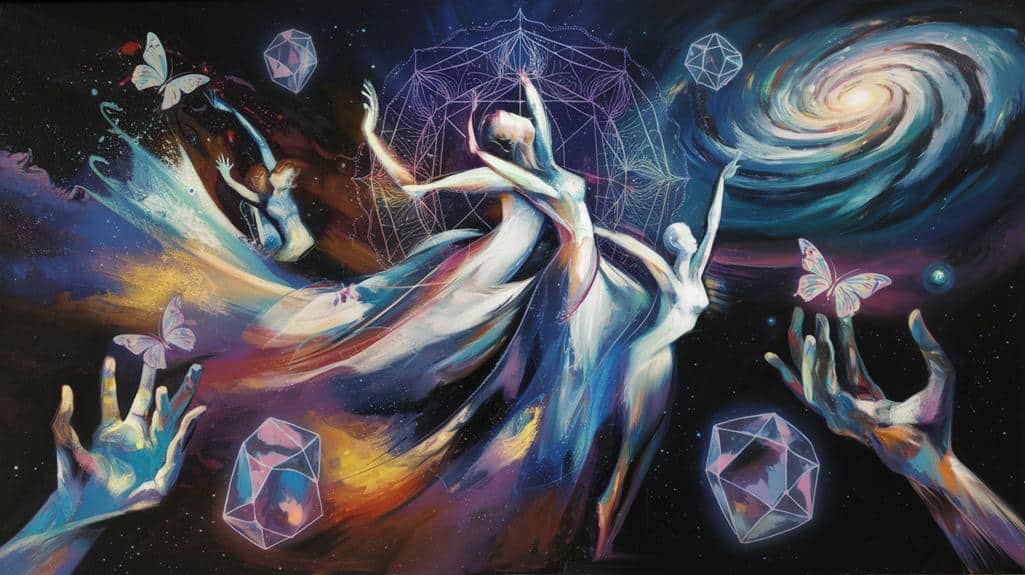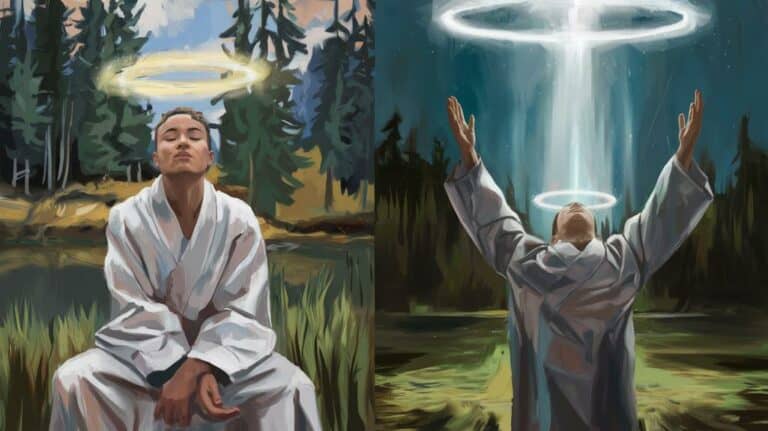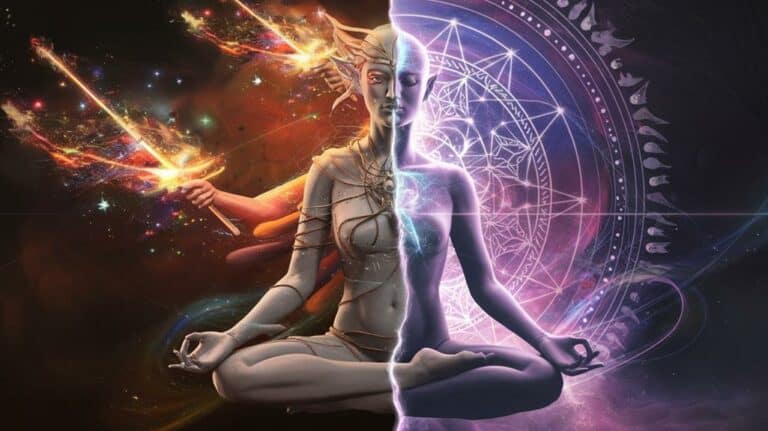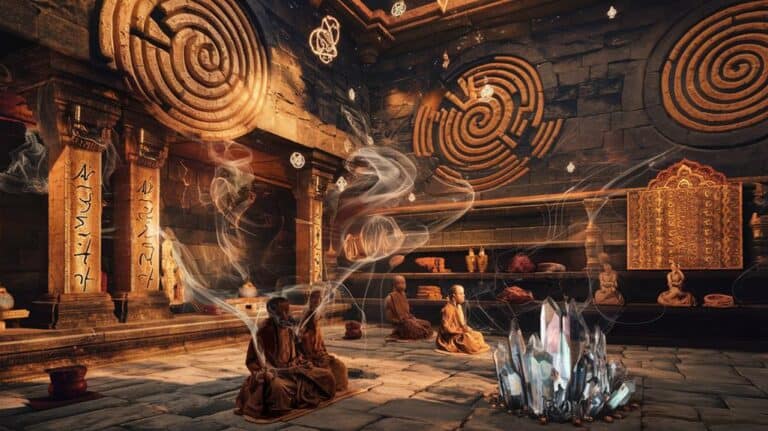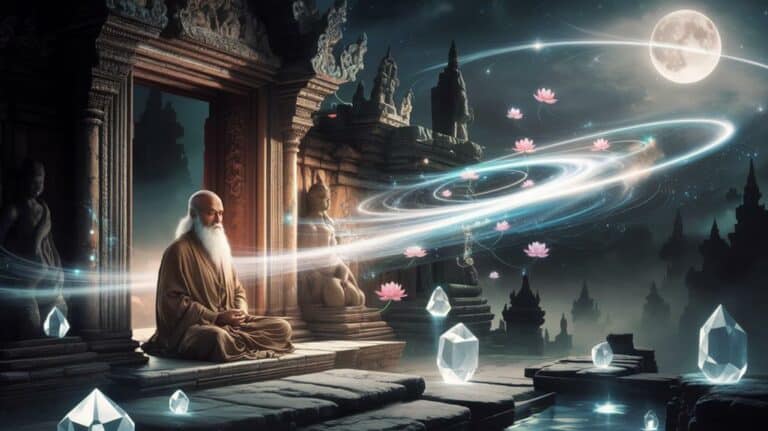Mystical Experiences in Art and Creative Expression
When you’re standing before a piece of mystical art, you’ll often sense something beyond the visible brushstrokes and colors—a resonance that transcends ordinary perception. Throughout history, artists have tapped into altered states of consciousness to bridge the gap between physical reality and spiritual dimensions, creating works that speak to humanity’s deepest questions about existence. Whether through sacred geometry, universal symbols, or contemporary digital media, these creative expressions continue to offer glimpses into the ineffable. You’re about to discover how artists across time have transformed their mystical experiences into tangible forms that still hold profound relevance today.
Historical Origins of Mystical Art
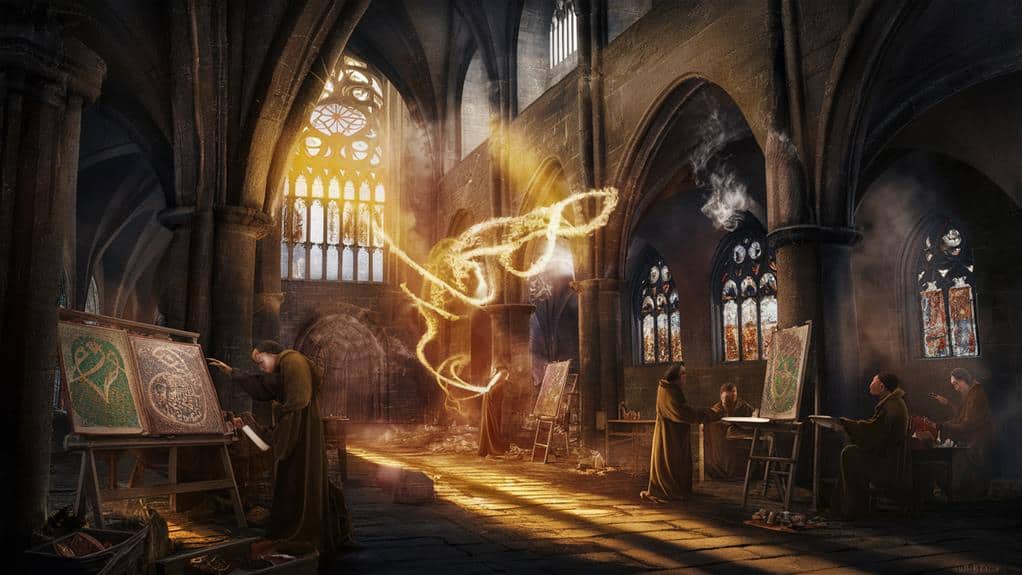
One can trace mystical art back to humanity’s earliest civilizations, where shamanic cave paintings and ritual objects served as gateways to the divine.
You’ll find these primal expressions etched into rock faces and carved from bone, each stroke and symbol pulsing with humanity’s eternal quest to touch the sacred.
As you explore ancient Egypt’s temples and pyramids, you’ll encounter hieroglyphic spells and cosmic imagery designed to bridge mortal and immortal domains.
In India’s elaborate mandalas and Tibet’s thangka paintings, you’re witnessing the crystallization of meditation practices into visual form.
These weren’t mere decorations – they’re portals through which you can still access timeless wisdom.
Medieval Christian mystics transformed their visions into illuminated manuscripts, while Islamic artists developed intricate geometric patterns that express divine unity through mathematical precision.
You’re inheriting a legacy where each culture has contributed its unique approach to depicting the ineffable.
Whether it’s Aboriginal Dreamtime art or Byzantine icons, these works don’t just represent spiritual experiences – they’re designed to induce them, inviting you into direct communion with mystery itself.
The Role of Sacred Geometry
These ancient mystical traditions converge in their sophisticated use of sacred geometry, where mathematical proportions become vessels for spiritual truth. You’ll find these patterns everywhere – from the spiraling fractals of a nautilus shell to the perfect symmetry of a snowflake, reflecting nature’s inherent mathematical order.
When you explore sacred geometry in art, you’re connecting with the same divine principles that mystics and artists have channeled for millennia. You’ll discover how the Golden Ratio appears in classical paintings and architecture, creating compositions that resonate with your deepest intuitions about beauty and harmony.
The geometric mandala, with its radiating patterns emerging from a central point, mirrors your own consciousness expanding outward into universal awareness. As you contemplate these forms, you’re participating in a meditation that transcends cultural boundaries.
In your own creative practice, you’ll find that incorporating these sacred proportions isn’t just about achieving visual balance – it’s about tapping into an ancient language of form that speaks directly to the soul.
These geometric principles aren’t arbitrary constructs; they’re gateways to understanding your place within the cosmic order.
Visionary Artists Through The Ages
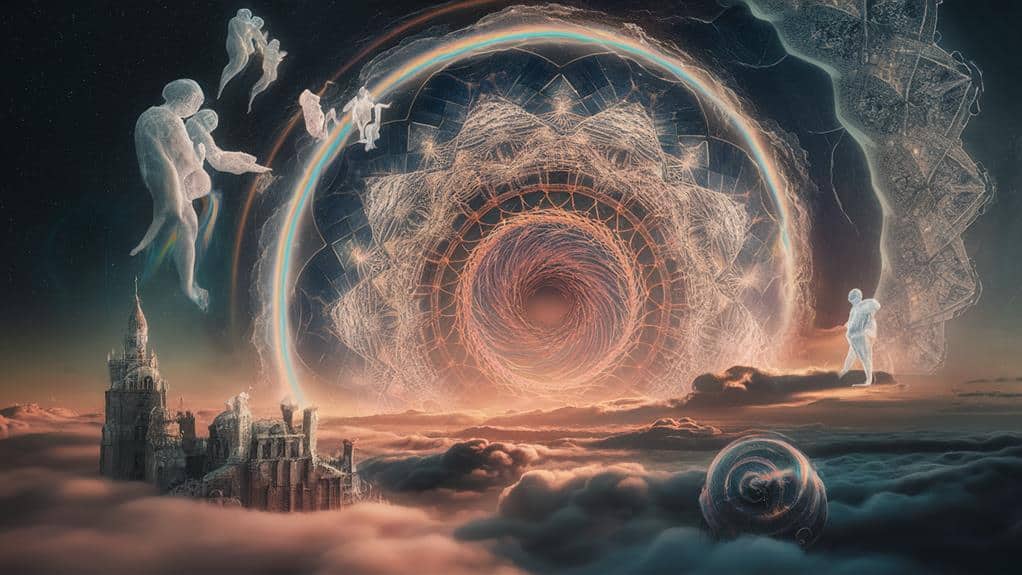
Throughout history, visionary artists have channeled mystical experiences into revolutionary works that transcend ordinary perception. You’ll find their influence spanning cultures and epochs, from William Blake’s ethereal illustrations to Alex Grey’s transcendent paintings that map the subtle energies of consciousness.
These pioneers have dared to venture beyond conventional reality, bringing back visions from domains that most can only imagine. When you study the works of artists like Hieronymus Bosch and Salvador Dalí, you’re witnessing the manifestation of deeply personal spiritual journeys transformed into universal visual languages.
Their canvases serve as windows into altered states of consciousness, where divine geometry meets raw emotional truth. You’ll notice how contemporary visionaries like Amanda Sage and Luke Brown have carried this tradition into the digital age, using modern tools to explore ancient wisdom.
These artists don’t just create images; they’re cartographers of consciousness, mapping territories that exist beyond ordinary perception. Through their work, you’re invited to explore the boundaries between seen and unseen worlds, where sacred visions merge with artistic mastery to reveal profound truths about the nature of reality itself.
Altered States and Artistic Expression
Artists diving into altered states of consciousness have historically accessed profound wellsprings of creativity, resulting in works that challenge our understanding of perception and reality.
You’ll find that these heightened states – whether induced through meditation, ritual, or other means – can dissolve the boundaries between your ordinary perception and domains of extraordinary insight. When you examine works created in these states, you’re witnessing the transformation of ineffable experiences into tangible form.
You’ll notice how artists throughout time have sought to capture the essence of their transcendent moments, translating mystical visions into visual languages that speak directly to your soul.
Whether you’re drawn to Alex Grey’s intricate portrayals of spiritual anatomy or William Blake’s cosmic revelations, you’re encountering art that emerges from spheres beyond ordinary consciousness. These works don’t just represent altered states – they’re portals that can transport you there.
Through careful observation, you’ll discover how shifts in perception manifest in distinctive artistic elements: fractalized patterns, luminous color harmonies, and impossible geometries that seem to pulse with living energy.
It’s through these works that you’ll glimpse the infinite possibilities lying just beyond your everyday awareness.
Symbolism in Mystical Artwork
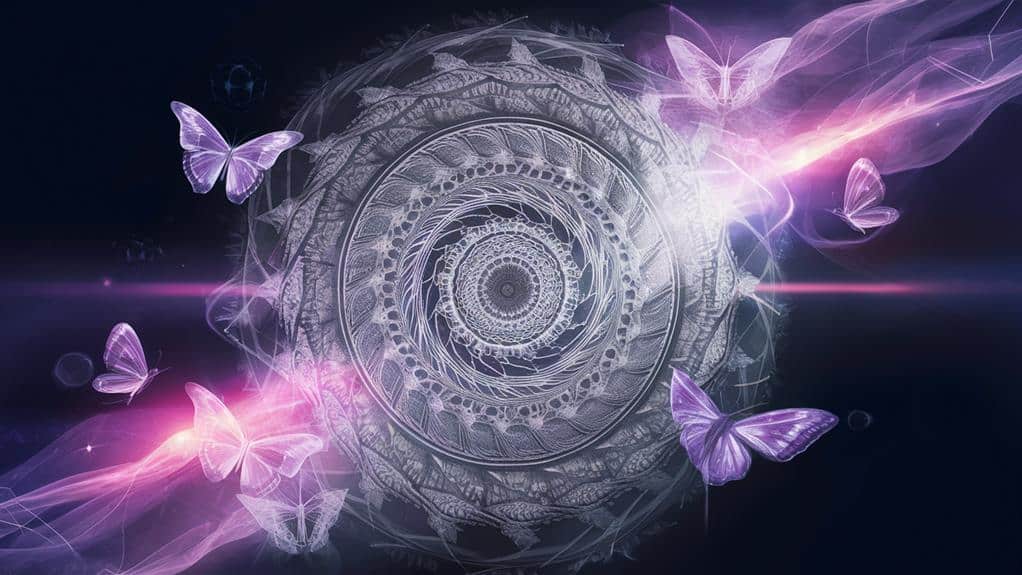
When exploring mystical artwork, you’ll encounter a rich tapestry of universal symbols that transcend cultural boundaries and speak to deeper spiritual truths. Ancient mandalas, spirals, and sacred geometries reveal patterns that echo throughout human consciousness, inviting you to investigate domains beyond ordinary perception.
These archetypal images serve as gateways to transcendent experiences, bridging the gap between material and spiritual dimensions.
You’ll find that mystical artists often incorporate luminous imagery – radiant halos, divine light, and celestial bodies – to represent enlightenment and spiritual awakening. Sacred numbers appear repeatedly: the trinity, the four elements, and the seven chakras manifest in compositions that map the intersection of human and divine domains.
The serpent represents transformation, while the lotus emerges from murky depths to symbolize spiritual unfoldment.
As you examine deeper into mystical symbolism, you’ll recognize how artists use color and form to convey ineffable experiences. Golden ratios and fractal patterns mirror the underlying structure of reality, while ethereal beings and otherworldly landscapes challenge your conventional understanding of existence.
These symbols become keys that reveal doors to your own inner mysteries.
Modern Interpretations of Divine Experience
Modern approaches to depicting divine encounters have evolved dramatically beyond traditional religious iconography. You’ll find today’s artists interpreting transcendent experiences through abstract forms, digital mediums, and immersive installations that break free from conventional sacred imagery. These contemporary expressions invite you to explore mystical moments through your own lens, unbounded by doctrinal constraints.
When you encounter these modern interpretations, you’ll notice how they often blur the lines between the physical and spiritual dimensions. Artists now weave personal narratives with universal themes, creating works that resonate across cultural boundaries. You might see divine presence represented through pure light, geometric patterns, or even the deliberate absence of form – each approach offering a unique gateway to contemplating the ineffable.
In this new artistic landscape, you’re encouraged to find your own connection to the divine through works that challenge traditional perspectives. Virtual reality installations transport you into meditative spaces, while multimedia experiences engage your senses in ways ancient artists could never have imagined.
These modern interpretations don’t simply depict divine experience – they create environments where you can actively participate in the mystical journey.



